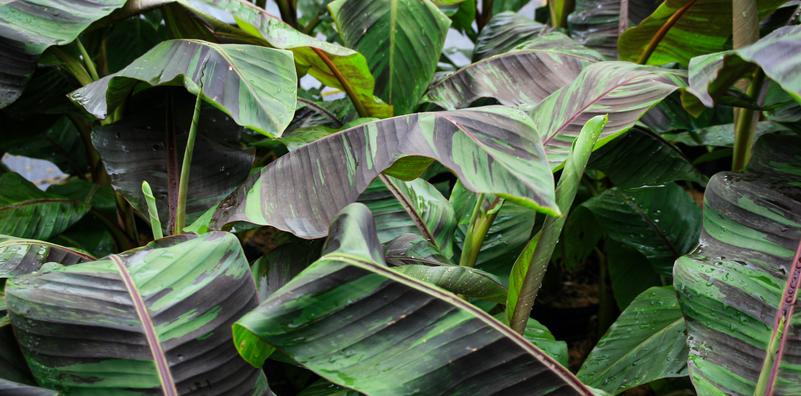Tropic Like It's Hot
Before we get started this week, I just wanted to thank all of you who responded to last week’s newsletter. Knowing how many of you share my sentiments and concerns for our dwindling woodlands and riparian zones and the safety and health of the animals that live in them is both affirming and reassuring. I hope it was able to spark a larger conversation amongst your own communities about how to prevent very preventable natural tragedies in the future.
On the back of last week’s conundrum, this Sunday, June 29th, is somewhat timely and coincidentally the International Day of the Tropics. Talk about rallying around conservation! If there’s anything the main populace has heard about conservation for the last 30 or so years, it’s that our rainforests are in desperate need of assistance due to rapid overharvesting and deforestation processes. Tropical forests, which compose 45% of all forested land worldwide (out of the only 31% total forested area) are responsible for housing more than 80% of the Earth’s biodiversity from plant material to medicinal compounds, rarely seen bird, reptile, and mammal species, and an incomprehensible number of insects. Unsustainable collection and destruction of these ecosystems ensures the erasure of this broad spectrum of living beings, a practice being mimicked on a subjacent level here in our own temperate forests, which take up 33% of all forest-covered lands worldwide.
Loss of our carbon-capturing trees on a broad scale such as this has helped to fan the flames of climate change, literally and figuratively, resulting in warmer temperatures and previously unthought of weather swings in our Mid-Atlantic region alone. Tornadoes, life-changing hurricanes, months-long droughts and heatwaves that have changed the landscape of our industry both in a physical and metaphorical sense have also allowed us to start growing things we weren’t able to previously. Plants that previously could only be found South of North Carolina have begun to successfully creep into the tri-state region and beyond: Crape myrtles are now being sung the praises that Japanese maples heard in the 1960s and 70s, decorating the suburbs like they’ve been chosen as the new HOA standard, when they previously struggled in our chilly winters.
Previously unseen insects that weren’t known to cross tropical southern borders, such as the southern Pine beetle, can now be found successfully overwintering in “temperate” zones that are quickly becoming subtropics, zones that will likely one day be fully tropicalized. Kudzu, an invasive vine known to be the bane of Southern ecosystems and previously thought inconsequential to Northern climates, has begun to take root in warmer, often urbanized areas, such as microclimates in Brooklyn and Boston. We counteract these events by planting native plants, encouraging pollinators and wildlife to visit our yards, refusing chemical sprays for pesky “weeds” (a weed is just a plant in the wrong place), and educating our friends and family about the changing natural landscape and what they can do to make a difference.
After two straight weeks of doom-and-gloom, I’d like to offer you a silver lining. Hardy bananas like Ensete maurelli, Musa basjoo and Musa sikkimensis, and previously tricky elephant ears (Colocasia sp.) finally stand a chance as recurring ornamentals here in our Northeastern states. Due to the success of these plants in the yards and gardens of Pleasant Run employees, we’ve decided to increase our tropical plant production this year to include a mix of foliar colors meant to jazz up the summer container, poolside, or eclectic garden with an aesthetic focused on the exotic.
ELEPHANT EARS
Colocasia gigantea ‘Thailand Giant’ #2 | (54)
Colocasia ‘Black Swan’ (PP30318) #2 | (54)
Colocasia ‘Distant Memory’ (PP30292) #2 | (53)
Colocasia Polargreen™ #2 | (48)
Colocasia Redemption™ (PP34729) #2 | (40)
Colocasia ROYAL HAWAIIAN® ‘Waikiki’ (PP34615) #2 | (48)
HARDY BANANAS (non-edible)
Ensete maurelli #3 | (20)
Musa basjoo #3 | (13)
Musa sikkimensis ‘Ever Red’ (PP36432) #2 | (90)
IRANIAN BORAGE
Echium amoenum ‘Red Feathers’ #1 | (51)
EXOTIC-LOOKING NATIVES
Magnolia macrophylla #3 | (17)
Magnolia macrophylla ssp. ashei #3 | (72)
Magnolia tripetala #3 | (20)
Yucca filamentosa ‘Excalibur’ #3 | (171)
Yucca filamentosa ‘Color Guard #3 | (516)

Musa sikkimensis 'Ever Red'

